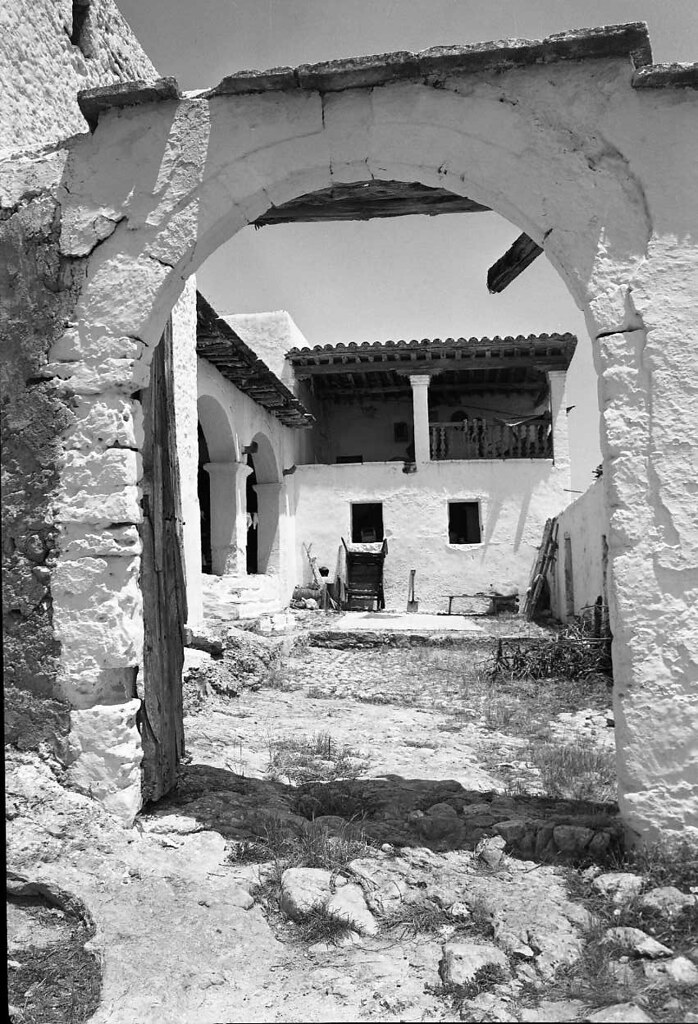GET IBIZA VILLAS IN YOUR INBOX? SUBSCRIBE
GET THE LATEST IBIZA NEWS IN YOUR INBOX SUBSCRIBE

In the company’s stylish San Lorenzo design office, you can find Xavier focused on managing and coordinating all the various projects underway while allocating the array of resources needed. Xavier explains he’s a project manager who is very hands on. “I am very involved personally as a director or I assign the other experienced architects to complete and carry out tasks as needed; nevertheless, I am always informed of what happens in each project to maintain and ensure a high quality of standard across the board.”
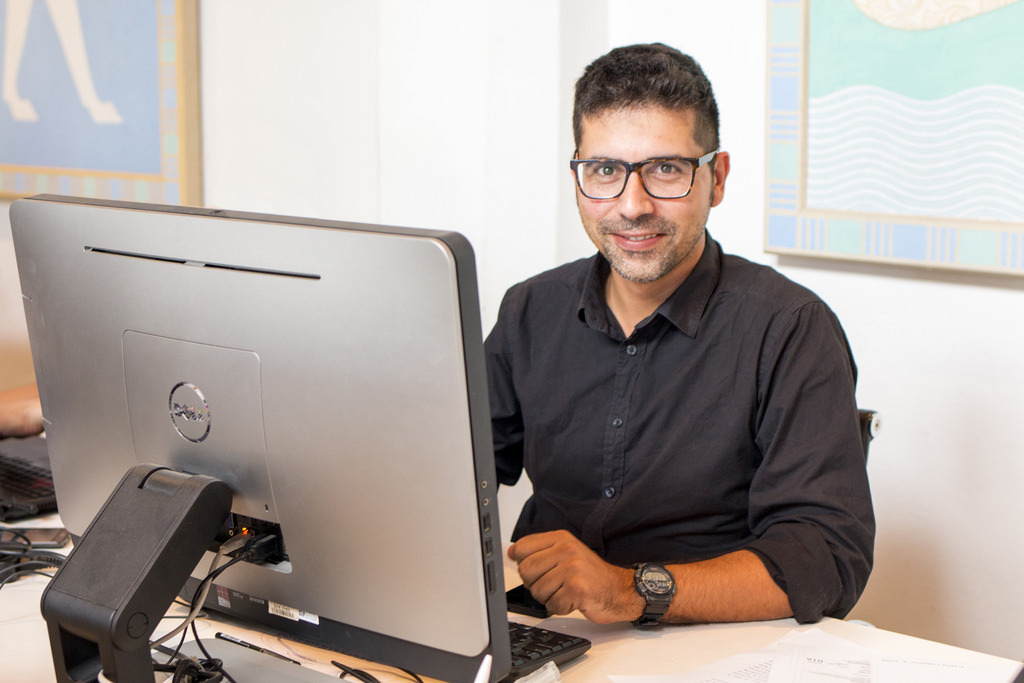
This type of dedication comes from the vast experience gained in all aspects of architectural design while developing his career in Barcelona. Having earned a Master in Architecture from the Technical school of Architecture in 2006, Xavier put his sights on project management and was certified by 2012. “I learned to think of projects from every point of view, understanding the creative process behind a design, which is a mixture of knowledge, technique and intuition.” Xavier’s favourite element of working with the renowned Blakstad design firm is the philosophy in which they work and the pride that comes with it, “We build traditional Ibicencan architecture updated to modern standards without destroying the essence of the island.” Of course, unexpected obstacles and challenges may rear themselves in the design process, and Xavier is well prepared for them, “The level of professional standards represented in the office speaks for itself. I love working with clients in an ever changing environment and having the ability to overcome challenges and any problems that may arise.” With a passion for everything creative going on underneath the roof at Blakstad Design Consultants, Xavier’s work has led him to believe that the most important aspect that characterises his profession, “Is the ability to survive in a constantly changing environment. The projects begin and end in relatively short time periods and involve so much creativity.” Committed to ensuring each project is efficiently completed Xavier believe it’s important to be proud of what you’re doing in each moment, “All of our projects are special because they are designed specifically for each customer with their own special requirements. This makes you feel proud of each project that leaves the office.”
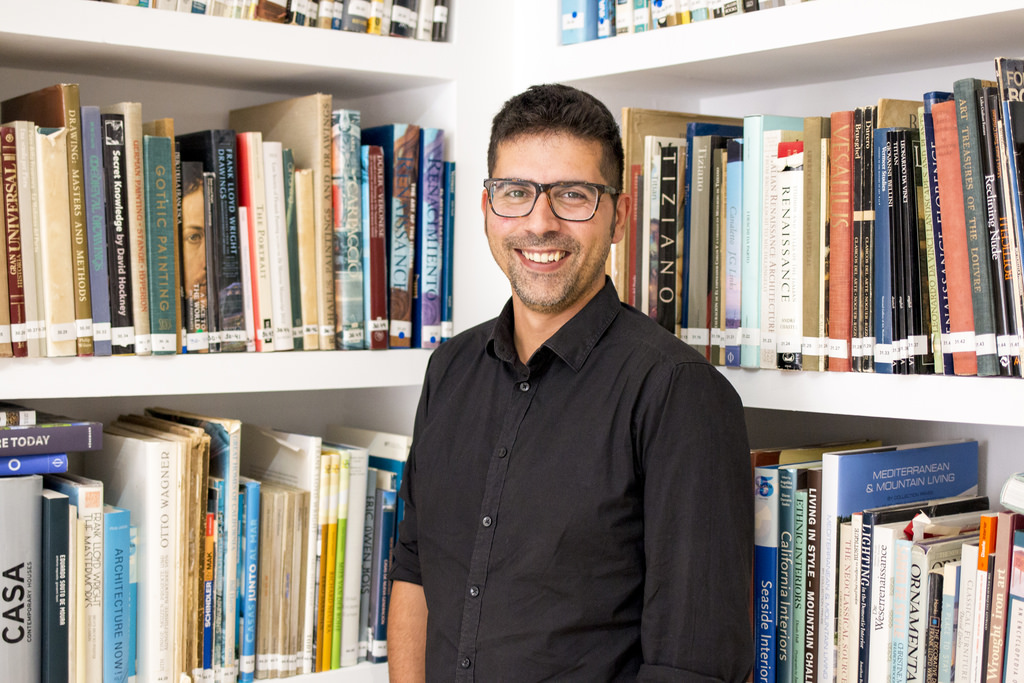
Sonia’s family hails from Granada but when both her brother and then sister moved to Ibiza, Sonia was convinced to follow. Little did she know it would be a life altering choice. On arrival in Ibiza Sonia studied interior design and worked in fashion retail while obtaining her qualifications. It was her future husband who first introduced her to the work of Rolph Blakstad senior. They were teenage sweethearts and he had watched his father work for Rolph, becoming enamoured with his methods and his way of being. When they finally married he told Sonia that one day they would have a Blakstad house. Eventually, they were able to purchase a plot of land and so began a relationship that would last decades. While constructing their home, Rolph senior invited Sonia to work along side himself and his son, also Rolf, but with a Spanish spelling. Together the three of them occupied a room that sits adjacent to the current Blakstad HQ. Sonia was in charge of converting the hand drawn architectural concepts into a digitised format. A strong bond was formed between the three of them as Sonia was soon absorbed into the Blakstad family. “I had to learn so much, about the style, the history of the architecture of the island,” she remembers. “Rolph was a wonderful teacher. He taught me everything, all sorts of things about architecture but also about other cultures, carpentry and design.”
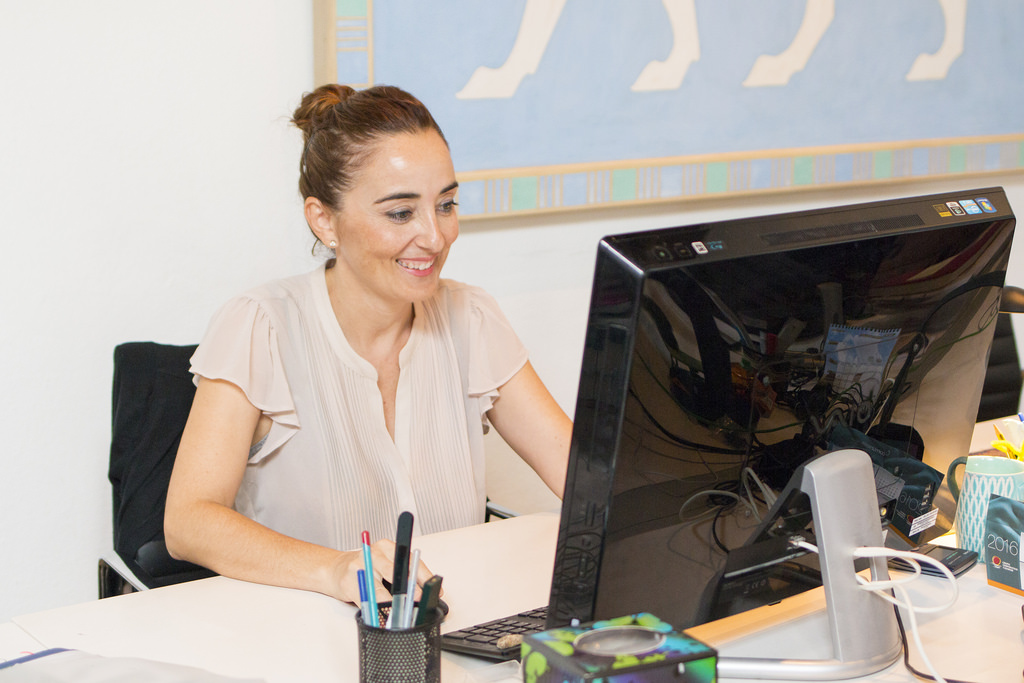
The process is completely collaborative and the atmosphere at the Blakstad office is that of a collective of people working towards one goal. Sonia’s role as draughtswoman is to transform Rolf’s designs into a format where the architects can prepare the appropriate applications to council. It’s an exacting process that requires patience and a near obsessive mind but the result is always satisfying. “A Blakstad design elevates the everyday and the simple to the extraordinary; the houses are harmonious, light, unpretentious and full of grandeur at the same time,” Sonia explains. “There are so many adjectives to describe them but the best thing is to see and feel them, then you realise the effect they have. I am very proud to be part of this.” The house Sonia and her husband built with Rolph didn’t become her family home until recently. Both she and her husband wake in the morning and can’t quite believe their dream came true. “After all this time, we still can’t believe that it’s ours,” she gushes. The respect for both Rolph and his son are obvious, amongst all of Blakstad’s employees but Sonia has a special place in her heart for those early days when it was just the three of them. “He was so patient with me, I admired him so much. It was so easy to work for him.” Although, Rolph is no longer with us Sonia’s sentiments have changed little, having worked at Blakstad Design Consultants for nine years. “I love my job so much,” she says. “Working here feels like I’ve won the lottery!”
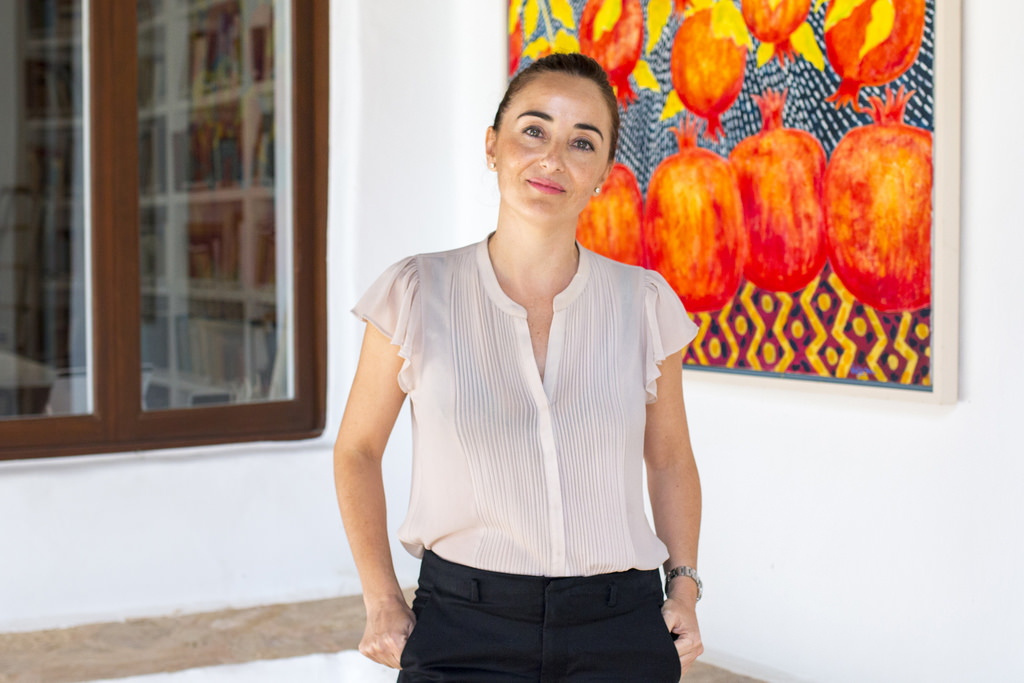
One winter afternoon, my homing pigeon instinct became particularly activated, calling to me with a diffuse but acute urgency. It was about three in the afternoon, and I simply started walking inland away from Santa Eulalia. I walked quickly, just letting my feet lead the way; the way westward, following the trajectory of the dying sun. After about two hours, I began climbing into the hills. My heart beat quickly. I had a feeling of impending revelation. Suddenly, I was aware that I had passed a hidden boundary on the path. The quality of air had changed. It was gentler, of finer texture. The structure of the surrounding vegetation was more delicate. I passed a pomegranate tree with vivid yellow leaves.
A gnarled grape–vine hanging in its branches, entwined among the deep red fruit. I had entered a beautiful hillside garden with terraces rich in every kind of fruit tree. Hesperides. I followed a path around to where three tall date-palms stood silhouetted against the sky. The sun had slanted sharply downwards in the west, presently to disappear beneath the mountains. Just above the terrace of the palms was a square stone pool. Standing beside it were three women in black peasant dress: an old woman, a woman and a girl. Behind them, set into the hillside, was the doorway into a cave. Into the cave, a few steps down, a pool of water, an underground spring. I entered the cave.
The scene was dreamlike, my body dematerialised. I vanished to myself. I remember nothing further, not my return journey through the valley in darkness. The place was the spring of Balafi (an Arab name, meaning ‘Fountain of Blessed Waters’. I soon visited it again after my strange initial encounter. I painted a dove in blue line inside the inner chamber of the fountain. It remained there for some years. At the time I did not realise that I was following immemorial precedent; that years later, I would find another fountain with an ancient painted chamber with an image of the sun, in the same relative position as I had painted the dove. The meaning of the dove and the sun in this context is the same. Balafi became for me Hesperides, garden of the blessed isles of the western sea.
It was a place that, when I was leaving Ibiza to go on a journey, I would visit to silently say goodbye; and on my return, to visit again to refresh and renew myself. There is something subtle, yet palpable in the air at Balafi. It cannot be apprehended directly; one must use the corners, the edges of one’s senses. The air is soft with a scent of honey about it. If one could see more clearly, there is a fine golden sparkle floating in the air, as dust shining against the lowering sun on a late afternoon in summer. As dusk falls, there is a fine movement of silvery haze in the olive trees. A slow unfolding movement as the souls of the trees open themselves to the night breezes and the stars. A faint cloudiness, expanding from the foliage, gently breathing.
The whole landscape breathes, one’s own body breathes softly and merges with the whole. Time itself dissolves, each moment fills, brimming with its own passing. I brought a wise friend with me to Balafi. We sat beside the pool, ripe grapes were hanging down over the water; a turquoise dragon-fly hovered, then darted to and fro. The water reflected white billowy clouds that mingled with waterweed revealed in the depths of the pool. I asked my friend, “What is it that gives this feeling to this place?” He answered, “A place that is blessed by Nature and blessed by Man is blessed by God.”
In those days before 1960, a walk in the country was a Marco Polo journey through many lands. There was such variety, such difference from one farm to the next. Each had its own special flavour. There was something deeply satisfying in the atmosphere that set Ibiza apart from other places I had visited. Feudalism had never existed on the island. There was no nobility, no landless peasants living in towns and working on another’s fields, as was the case on the neighbouring island of Mallorca.
Society was completely decentralised. There was virtually no government, at least it was not felt on a personal level. Because the family was effectively the largest social unit, a spirit of independence and self-reliance prevailed. Each farm was a tiny kingdom that grew every kind of fruit tree and field crop, provided meat and wine, clothes and shoes; all the needs of the family were fulfilled on the farm itself. A Spanish military psychologist once told me that the Spanish Army considered the Ibizans to be substandard material, that they could not be taught to march in step. I was proud of them.
The Ibizans had a social structure that allowed each family to pursue its own life according to its own inner genius. An Ibizan may have been oppressed by the circumstances of life, but not oppressed by enforced behaviours imposed by an overseer. Enslavement is a subtle thing. Most cultures practice it to a much greater extent than people realise. In Ibiza enslavement was not programmed into the cultural system. There is a very great difference between working under arbitrary rules and working according to the dictates of wind and weather – between orders based on human conceits and orders based on natural needs.
The one kind of work constricts the soul; the other liberates it. One brings discontent, frustration; the other, ease of movement and contentment. Oneness to the moods of nature engenders wisdom in a person and versatility. These are qualities I found in the peasant farmers of the island. If you live as a king, of no matter how tiny a realm, you are still a king, responsible to the microcosm that is a sample of all life. These farms, gardens, little kingdoms, breathed a sense of wellbeing seldom met with today. So much human care, contact with trees and animals creates something precious in the atmosphere. In the last analysis, what set Ibiza apart, for me, was its baraka, the feeling of blessedness.
“After a year and a half living in the old town of Ibiza, my wife and I moved to Santa Eulalia, then a lovely village set among orange groves by the sea. It was a lush orchard. A network of irrigation canals called sequias fed by the river ran to all the farms surrounding the village. This was the reason for the richness of the foliage concentrated out there. In the summer after the heat of the day, the sequias were opened and the water poured out like molten silver through the maze of little trenches under the orange trees. The air became vibrant with freshness after the long dry hours of the afternoon. The soft sound of the waters rushing could only fill one’s heart with contentment, completeness. Mary and I would set out on walks, to be away for a few days at a time. We carried blankets so that we could roll up on the ground, wherever the night found us. There were no hotels on the beaches, only the odd fishing boat puled up on the sand. In this way we walked around the island not at one go, but little by little – exploring the island, returning home to Santa Eulalia after a few days.
On our return, trudging down the dirt road which was the main street, we would be hailed by Toni Ferrer, owner of the general store called ‘Las Delicias’. He would pull a little wooden table out onto the road, bring chairs and glasses, and wine to celebrate our safe return from darkest San Carlos where only ogres and witches lived. It is difficult to realise now, with paved roads leading to nearly all parts of the island, how large Ibiza seemed when there were only a few old cars on the island and the roads were dirt tracks. There were two buses in Santa Eulalia. They had been fashioned on the chassis of two Russian military trucks that arrived somehow in the Civil War. As the buses had been constructed by boat builders, they were made of wood and were pointed at both ends. The sterns swept up high like on Spanish galleons and gave the buses the appearance of female cats in heat. The wooden benches inside were arranged so that you sat knee to knee with your fellow passengers, thus having to share on your lap the chickens going to market. Some parts of the island had always been cut off. San Vicente did not have roads, only footpaths. A lateen-rigged felucca sailed twice a week to Ibiza bringing eggs and other produce to market.
Some of the valleys in the mountains behind San Vicente, remote even today, had the remoteness of Tibet in those days. The remoteness was, of course, not to be measured in kilometres, but in cultural communication which is a relative perspective. Someone says to me today, “Oh, you live so far away.” I think, “I don’t live so far away. Far from where? Far from his house, he must mean.” So the remoteness that we felt in the valleys was the distance from our own cultural conditioning, cultural system of techniques. The cultural system of the valleys of San Vicente was old, historically. The techniques used in farming and house building, in custom and belief, had been in use for a long, long time; in use before the city of Babylon flourished. In use long before they were brought to the island, because cultural systems are exportable. So that from a cultural point of view, the distance between Mary and I on the one hand, and the people of the valleys on the other, was one of cultural time.
Now when I speak of the ‘mood of a place’, I do not mean something imaginary, something subjective, something seen in the eye of an artist. It is something real. You don’t have to believe in it. It works anyway. It is the mental field, the psychic impress on the environment, the aura, the etheric climate. It is changeable like the weather, but it is a mental field, mental-magnetic charge, continuum. It is highly susceptible to human mental activity. As the activity, mental and physical of the people in these remote valleys had been more or less constant during millennia, the mood of the place had long been very stable. It was as much a cultural reality as one could ever hope to find. It was a 90% trip back into the ancient world for us. For those who lived there, it was just normal life, and they came out of their houses to stare at us as if we had just landed from outer space, as well we might have done. The human mind is in a continual state of interchange with the psychic plasma, the mental impress in an environment: A group of fishes asked a wise fish, “What is water?” The wise fish answered, “It is all around you.” It is the travelling fish that can taste if the water is more salty or less salty in other parts of the sea.
So that people following certain activities, certain ways of farming, certain ways of thinking, create a neutral climate in the place where they live. The mood becomes stabilised and reinforces itself by a return influence on the minds of the people submerged in the field of that environment. This is called karma in the east. The mood is the karmic impress. If a group of people remains isolated for long periods of time, it is probable that their cultural practices will be stabilised for long periods of time. In a situation where small groups of people remain isolated from each other over a long period of time, the idiosyncrasies of each group become stabilised. Each little group becomes like a little kingdom until itself. It becomes difficult for these groups to influence each other or to be influenced from outside unless there is a truly fundamental shift in the economic and technical systems of cultural force impinging from without.
The impingement is mental. There is a mental breakdown, a devaluation of the existing cultural system, if the process goes beyond a certain point. Thus we found ourselves wandering in the remote valleys of the past. We were in living contact with the people of the ancient Mediterranean. Our journey to Ibiza had been in Time as well as Space. I know now that it was in order to learn from the people and the place that I had come. Whatever it was that I found missing in twentieth-century industrial culture I found present in the ancient culture of Ibiza. I speak always as if this quality no longer exists in Ibiza. The island is still a magical place. But the qualities that I once experienced have been superseded and diminished by others. That intense, pungent presence in the countryside where I could feel the god Pan lurking, pagan nature, the very stones singing: all that vanished in the year 1960.
I had returned from a four-month journey to India and found a new feeling on the island, as if the magnetic tapes had been wiped clean. The stones were now neutral, silent, cleansed. It was as if the stage has been cleared in preparation for a new play – change in the air. I sensed that the god Mammon was to replace god Pan. I was sitting with a friend at the Kiosko in Santa Eulalia having a coffee. He said, “There was a big convention of yogis in India a few months ago. They were all praying to avert the predicted end of the world. Maybe it ended already and we just don’t know it.” We laughed. But something had happened to the atmosphere of Ibiza around that time. It wasn’t the mere beginnings of tourism that had caused change to happen.” Continue reading about Rolph’s explorations of an island steeped in history and mythology in the White Ibiza Living Guide next month.
“There was a small electric generator down in a corner near the port that provided electricity for the whole town of Ibiza. At night the town was so silent that all you could hear was the muffled thump-thump of the generator. After supper there was hardly enough power to make the filament in the lamp glow orange. An orange wiggly line. A light bulb gave off as much as the tip of a burning cigarette. Then, as people went to bed, turning off their lamps, ritualistic lamps, the light of those who did not go to bed gradually got brighter, so that by midnight it was possible to read a book. Then the generator was turned off for the night. For some reason, probably habit, there were shortages of bread, or charcoal, or other staples. One lived with few and simple things. There were shortages even of those things. Yet it all seemed normal and not especially inconvenient, something to joke about with your neighbours.
One evening the generator was not working, for some reason there was no bread in the shops, the upper town was dark. I stood across the road from a broad doorway. The doorway showed darkness within darkness. As I stared into this special darkness a whitish cloud, not of light but of some sort of energy, filled the space within the door area. I felt but could not see the stairs beyond the doorway leading upwards. I can remember so clearly about the bread and the malfunction of the generator because of the strangeness of this experience. Ibiza was having an unusual effect on my mental process. The vision of a ghostly rectangle of whitish light hovering in a darkened doorway was the first of a continuing series of experiences. It was as if my eyes had gained a tactile ability in space.
In the case of the stairs, I could feel them with a kind of radar even if I could not see them. The stairs themselves became a symbolic language as if to tell me that, in the darkness beyond thought, there is a way leading to other states of consciousness. The atmosphere of the island I can only describe as being psychically pungent. It was as if I could taste, feel, smell the cumulative effects of the events of centuries in the very cobblestones of the streets. As if the material environment itself retained, contained magnetically recorded all the influences that it had been subject to; from the sun, wind and rain to the sun of human emotions that had passed in its proximity. I could not unscramble, play back what precisely these events had been, but the overall effect I could feel. It is what is called the ‘mood’ of a place, but something stronger, with the effect on the emotions as strong as music.
This mood could be sensed to change perceptibly from street to street in the town, and from farm to farm in the countryside. As an animal can sense if an unfamiliar pool is safe to drink from, I became aware that some places are more benign than others, and that this benignity was a kind of nutriment to the mind, giving me a sense of fulfilment that I had been searching for. In Arab countries this nutriment is called Baraka. One’s relationship to it is relative. In addition to a heightened sensitivity to the mood of a place, certain experience, encounters, took on the quality of waking dreams, with the exception that these experiences seemed more real and the waking state of the dream. By merging my own psyche with the mood of a place, ordinary events took o a symbolic significance. Seen from the perspective of this state, a crowd of people appears to be a crowd of sleepwalkers moving slowly in a communal dream, unaware of each other, their minds clouded, self-dreaming, blind, unaware of the vibrant beauty of the world they are passing through.
In the upper town, women used to gather around the public fountains to fill earthenware amphorae for the household supplies of water. One afternoon as I was walking towards the western gate, the Portal Nou, in a little square I saw a pregnant woman standing at the fountain filling an amphora. She had one hand resting on her belly, the other resting on the amphora. The expression in her eyes was distant, lost in a dream. The amphora had filled and was running over. I too became lost in the contemplation of her. She had that strange quality of women painted by Giorgione. The moment became intensely real. I saw that the water of the fountain was eternal life, endless, flowing. But the water in the amphora was a single mortal life, just as the child in her belly.
One night, in the middle of the night, I awoke, strangely, my mind fresh, awake. I dressed and wet out into the street. The town was empty, silent, bright with moonlight. I walked though the narrow tunnel that leads from the square of the Ayuntamiento out under the great walls by the cliffs that tumbledown to the sea below the cathedral. There was a light breeze coming off the sea. I walked over the rocks at the base of the fortress walls. There were tiny fragments of glass strewn everywhere over the rocks, fragments of bottles thrown from the tops of the walls by the soldiers garrisoned in the fort. Each fragment shone in the moonlight like a star, so that once again I had the impression that was walking in the dark sky filled with stars.
The moonlight shining on the waters of the bay made a path of light leading to Playa d’en Bossa, then a lonely deserted beach. The salt marshes of Salinas were ghostly in the distance, the mountains ethereal, transparent. I became aware of someone sitting in he shadows near me, resting at the base of the wall. I moved closer and saw that it was Toni Ribas, the Ibizan painter. We nodded and sat together, silent and filled with peace. On another occasion, before dawn, just as the first touch of red tinges the deeper blue of the eastern horizon, I came upon Toni Ribas again, gazing across the harbour towards Talamanca towards the dawn. He was the only person I met on those solitary wanderings through the sleeping city. Toni died a couple of years ago. I can see him still, his back towards me, gazing across the sea, waiting for the dawn. Continue reading about Rolph and Mary’s new life in Ibiza and of Rolph’s explorations of an island steeped in history and mythology in the White Ibiza Living Guide next month.
In 1956, 26-year old Canadian history buff, painter, architect and filmmaker Rolph Blakstad, along with his wife Mary, ventured to the Mediterranean for what was supposed to be a ‘leave of absence’ from their lives to paint. Upon discovering Ibiza, they found a place – a world forgotten – in which they wanted to live. The famed architect tells his story (as yet unpublished in English) foreward to his book, La Casa Eivissenca… “Upon returning to Ibiza from Mallorca, we quickly assimilated into the small group of foreigners, nearly all writers or painters, who then lived on the island. It was simple to know all the expatriates as the group was not large. There were so few Spaniards, as distinct from native islanders, that the mainlanders were called foreigners equally with those of us who came from further afield.
We were fortunate to rent two floors of on of the large houses belonging to the Tur de Monti family in the upper town. Our landlady was Doña Lupé Tur de Monti, whose husband was mayor of Ibiza at that time. Doña Lupé’s brother Mariao who later became mayor, lived on the floor below us, and her brothers Juan and Mariano lived in their large houses across the street. The house of Mariano was a veritable palazzo filled with antique furniture, silk brocades and porcelain. The atmosphere in this corner of the island was not typical of the island as a whole, it was rather like that described by the Count of Lampedusa in his novel The Leopard. This atmosphere too has vanished.
We would sit on our balcony gazing across the bay into the distance, to the strains of Chopin drifting up from below as Mario’s daughter practised on the piano. I fitted out one of the large rooms as a studio and set to work preparing canvases. On the balcony I had a pair of binoculars mounted on a tripod so that I could study the life of the harbour and all the surrounding countryside. There was a perfection about the scene as viewed from the balcony. There was nothing which I could call ugly anywhere. Over centuries of slow evolution, of natural growth and change, the functional, the economic needs of the city found their expression in the relationship of farmland to harbour to city. Everything had a distinct place, logical, clear.
The walled city was compact, contained, it did not sprawl into the countryside wasting valuable farmland. True, the commercial part of the town had now grown outside the town walls since attacks from the Barbary pirates were no longer a threat. But the market and shops were confined to the port. The fishermen and their families lived in a village-like quarter, the Peña, at the far end of the port. The quay was broad, paved with stone, giving ample space for the fishermen to spread and mend their nest after the morning’s catch had been brought to market. Supplies from the mainland came to the island in wooden schooners. These had motors but used full sail to save on fuel. The schooners complete with bowsprits and carved sterns lined the quay.
These ships were still being built in the shipyard in the corner of the port. Beyond stretched a broad green plain, all farmland. In the pale gold morning mist shrouding the bay, shrimp fishermen in rowing boats loitered in the shallows. The scene each morning, so still, reminded me of the landscapes of Van Eyck. Every detail redolent with loving care, nothing blurred or insignificant, a microcosm. All life was breathing quietly in peace, shining, no distortion, nothing out of place. One morning, looking through the binoculars across the bay into the marshland of the further shore, I noticed groups of isolated gateways somehow reminiscent of Stonehenge, scattered here and there in the thickets of cane. They had a strange haunting quality about them.
That afternoon, I walked around the bay towards Talamanca to examine them. As I walked into the countryside on the far side of the bay, I felt I was entering a different time reference. If Ibiza town seemed medieval and in some respects nineteenth century, the countryside seemed pre-classical, Homeric, primordially Mediterranean. The marshland was cut through with shallow canals, which acted both as drainage of the land and boundaries of personal property. These canals were crossed here and there with little stone bridges which were closed on the other side by the gates which I had seen through my binoculars that morning. The gates had a strong Egyptian look about them. There were a number of Egyptian things on the island. The dogs, podencos, which in those days were about the only kind one saw, and also all the little carved scarabs and other things in the museum up by the cathedral.”
“As a child, I had a favourite book called The Magic Walking-stick. It was about a boy who had a walking-stick that was a kind of magic wand. By holding it and by making a wish, he could travel to anywhere in space and time. Looking back over my years in Ibiza, I realize that my travels in time have been to me as marvellous as the travels of the boy in the book. During these years, the ancient culture of Ibiza had passed away, evaporated. The great god Pan has truly died. From this side of the time-barrier, the age-old Ibiza that still existed twenty years ago seems as remote as the fabled kingdom of Solomon, and like that realm it can be revisited in the mind’s eye.”
So said famed Ibiza architect Rolph Blakstad in a (as yet unpublished in English) foreward to his book, La Casa Eivissenca. He goes on to continue the wonderful tale of a creative life that led him to settle in the Mediterranean. In 1951, the 21-year old Canadian history buff, painter, architect and filmmaker received the Emily Carr scholarship to study painting anywhere in the world. He chose Florence, Italy and alongside his wife Mary, headed to Europe for an adventure that saw them spend much time in museums, palaces and cathedrals, and most importantly, fell in love with the Mediterranean. After returning to Vancouver two years later to take up an opportunity to work in television, Rolph found himself with a feeling of ‘incompleteness’ around 1956.
Struck with a desire to go away for a year to paint and clear his head, he took a year’s leave of absence, knowing the Mediterranean was once again calling. “In Alicante we bought ticked for the boat to Mallorca via Ibiza. The night we sailed for Ibiza the air was warm, the sea calm. The little steamer was filled with islanders who, for one reason or another, had been visiting the mainland. Most of us slept on deck my wife and I shared a hatch cover with a family of gypsies. The night sky was filled with stars. There was a steady throb from the motors and the swishing sound of the bow waves, spreading outwards softly against the gentle swell. Dawn found us entering the harbour of Ibiza.
There was a bustle of preparations by the people on board, excited to be home, anxious to disembark. I suppose we felt what people had felt for centuries, coming into this little harbour bathed in the pale rose light of early morning. The peacefulness and calm was such that one sensed on was passing into a different realm, further away in time and space than could be measure by the night we had spent on the ship. The scene we had awakened to was distant, world forgotten, apart. The town itself was white, pyramidal, a terraced hill rsing from the sea with tier upon tier of crystalline cubic houses. The whole bay was bound together by great swathes of beige stone, the fortified walls. Beyond, ringing the whole bay, were mountain ranges of the kind you would imagine in a fairy tale. A kingdom in miniature. The light was incredibly clear: every detail of the distant farms and houses, every tree, seemed finer, more perfect – as when you look through the wrong end of a telescope.
The green farmlands came right to the shoreline of the bay. Hills covered with olive-trees came right up to the town walls. The quayside was lined with wooden sailing ships. The anchor was loosed. The chain sped out with a running clatter; our attention was suddenly brought to focus on the activity around us on the ship. People, recognizing friends on shore, waved excitedly, calling out jokes and greetings. It seemed that the whole town had gathered on the quayside. There was a warm, festive air. We were carried by a flow of passengers funnelling down the gangway into the waiting crowd on shore. The Ibizan women and girls were dressed in peasant costume. The men were dressed in faded well-washed cotton shorts and trousers. They seemed to be lounging together whether they were sitting or standing. To meet the boat was the great event of the day, a pleasure to experience even if you were not expecting friends. We had about an hour on shore before the ship was to depart, bound for Mallorca.
We headed up through the massive gates of the walled town. We felt exhilarated climbing the ancient, cobbled, winding streets. The houses seemed more vegetable than mineral, the softened contours appearing to grow organically out of the ground. It was impossible to absorb all of the details. There were balconies, stairways, tunnel-like passages twisting off in unexpected directions, tiny windows, people everywhere, women sitting in doorways intent on embroidering, children running. The whole town, streets and all, had an informal air of one huge living room shared by everybody. We did not feel like strangers. When we reached the Cathedral square, suddenly the view opened out over the whole bay and beyond, revealing range after range of miniature mountains.
The sun had risen, the light had changed from soft pink to the clear gold of a warm autumn morning. The sea beyond the harbour was deep ultramarine, the calm bay below was a paler blue, glowing from within with a soft white light, the reflections of the clouds floating overhead. Passing behind the Cathedral, we emerged to an even broader vista t the south, with the island of Formentera a thin line of pale blue in the distance. As we turned to descent to the port, we both knew that we had found a place in which we wished to live. We were on to Mallorca to see the island; we spent a week there, anxiously awaiting the next boat to Ibiza so we could settle in.”
“The traditional building essentially conformed to the Bit-hilani house plan, consisting of a breitraum or broad room [porxo] that has an entrance on one long wall and a succession of rooms opening off the other three walls. The porxo was used as a living room and work place. Little chairs were lined up against the walls and a table set on one side. If needed, the table was moved to the centre of the room and chairs set around it. This gave the room adaptability for various activities.
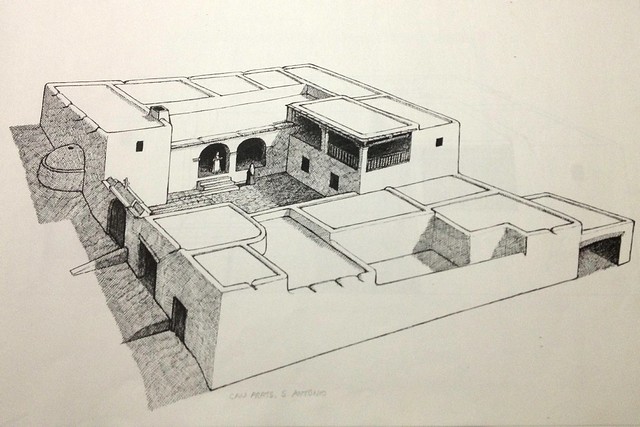
“Windows in ancient Ibicencan houses were very small and did not contain glass. They were not used primarily for light, but for air; light, and warmth generally came from the south-facing front door. Here you could see farmwomen shelling almonds, embroidering or spinning wool. The farms themselves differed from those on the other Balearic Islands, in that they were generally smallholdings. Although these were self-sufficient, the families on them relied on the help of their neighbours for the olive harvest, or on matanza day.
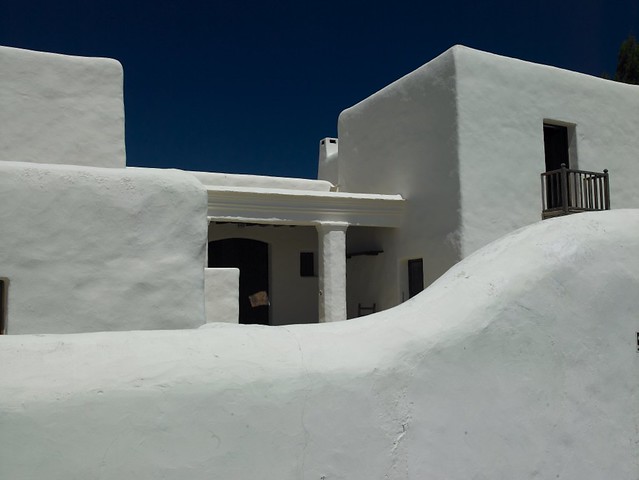
“These houses were built and rebuilt well into the mid-twentieth century, using the biblical ‘long cubit’ [approximately 52.5cm], a unit of measurement introduced along with the architecture by the Phoenicians. There is virtually no evidence of Hellenistic, Roman or Islamic influences of any importance in the basic design elements of a rural Ibicencan house.
“The cultural invasion of the island has changed the agricultural-based economy to one of tourism, making continuity with the past next to impossible. Basically, it has rendered many traditions irrelevant today.”
